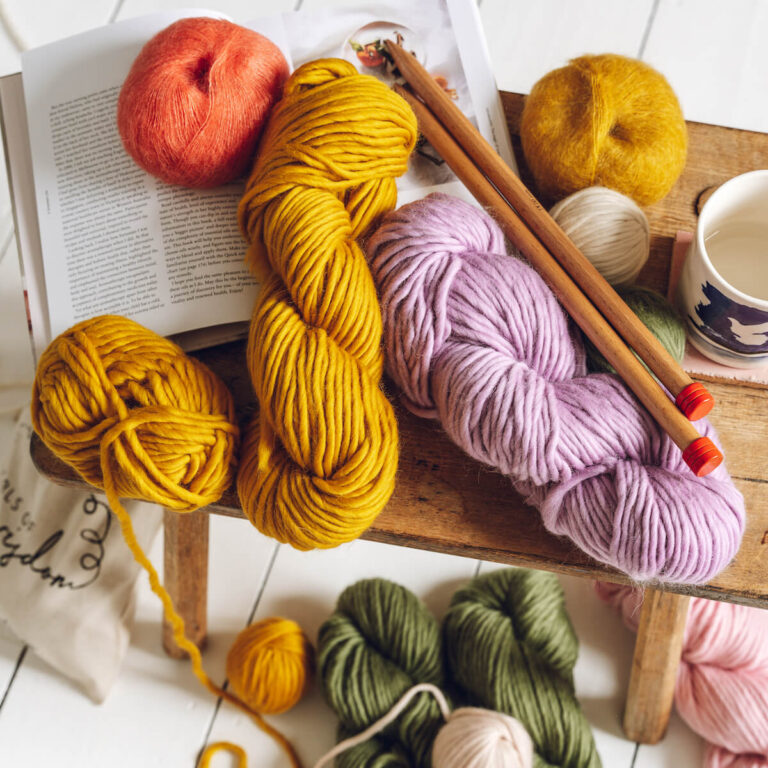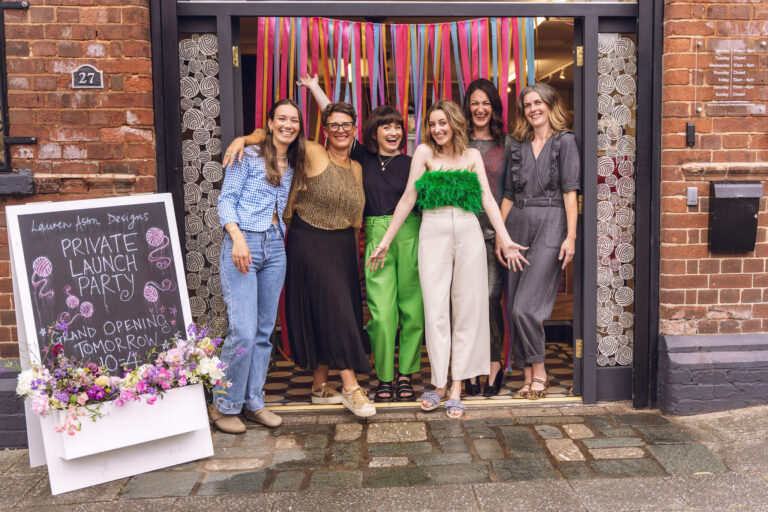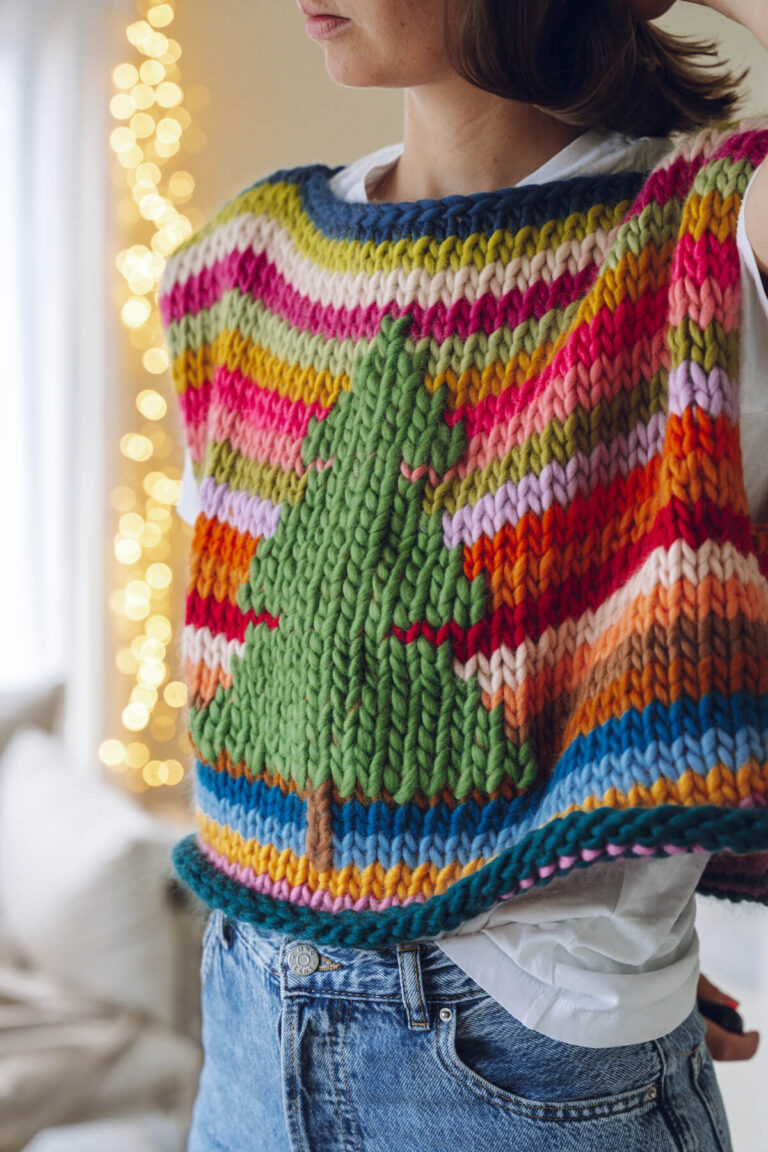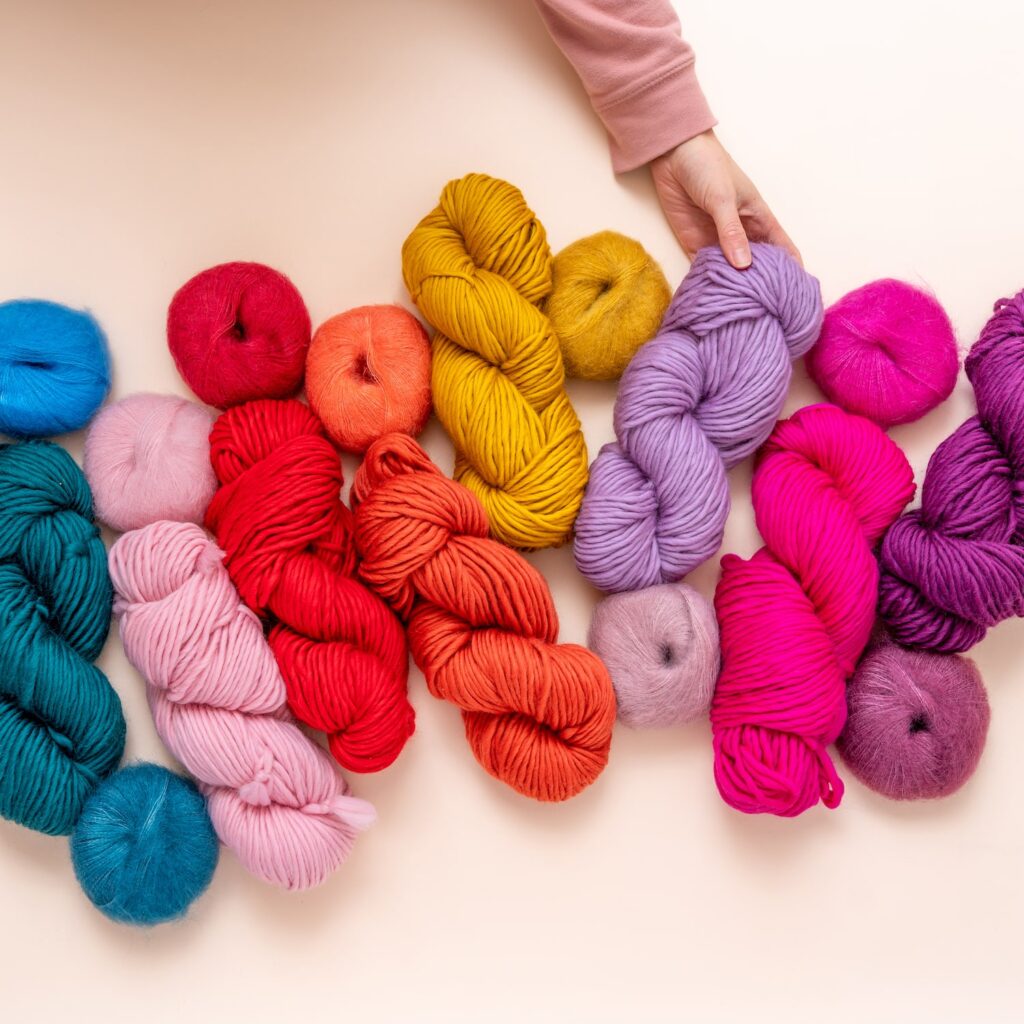Hello Pals,
How are you? I had something else planned for today’s blog but last weekend I posted some stories on IG about pricing and it sparked a really interesting conversation in my DM’s that I thought it would be good to touch on it here (so it won’t be deleted after 24 hours!)
What Happened?
If you’ve been following our weekly product launches (we’ve been launching a new product every week since Mid-August right up until December – you can see most of them in the New In Section at the moment should you be inclined!) You might have seen that last weekend we launched the LADvent Calendar: 25 days of Mini Mohair magic…. it’s our brand new Advent Calendar with 25 balls of Mini Mohair – one for each day of December – all limited edition colours we don’t normally sell, 5 Free Patterns, Access to a secret shop all in beautifully printed boxes we designed especially (I’m very proud, can you tell?)
I’ve been launching all our new products via our mailing list first and then on Instagram on a Saturday Morning and this one sparked quite a few comments about the price. The LADvent was £200 so understandably not a throw away purchase but a considered one. The thing that provoked the conversation – and in turn, today’s blog – was a question I received that said ‘Why so expensive?’
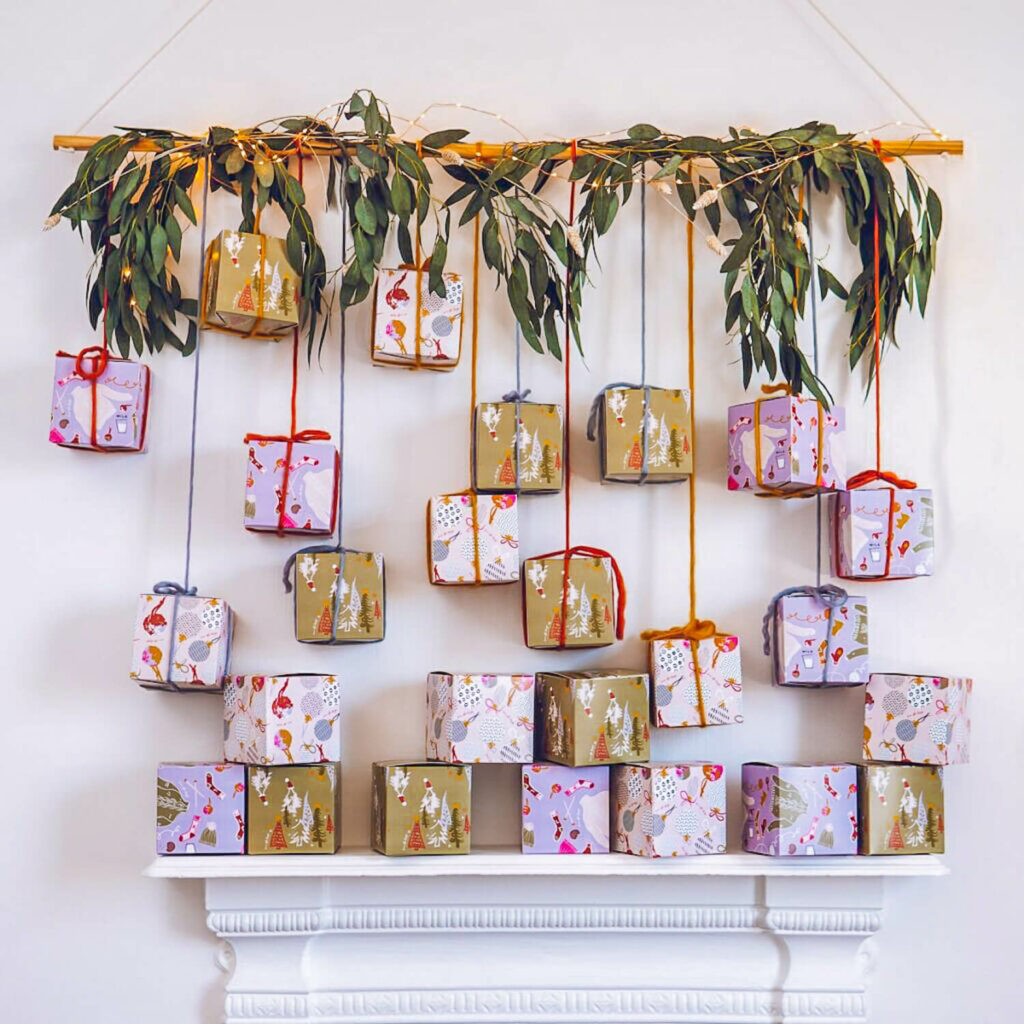
Why So Expensive?
I find this really interesting and I’ve been mulling it over ever since. When I discussed it on Stories the overwhelming response was from fellow small businesses who struggle feeling like the need to defend their pricing structure.
Personally I feel really conflicted – part of me feels like it’s a really fair question to ask, if you’re being pitched something and encouraged to spend your hard earned money on it, you absolutely should understand why it warrants a certain price.
But at the same time, as the person who ‘made it’ and pitched it really carefully to inform customers why it was so great, part of me resents having to justify my pricing…. I’m not saying either of these points of view is OK or right but they’re my initial reactions.
The point of this post isn’t for me to have a whinge, it’s to highlight the two difficult sides of pricing, for both creator and customer. There’s the business side where you have to figure out how much to charge for an item to make sure that you are earning a fair wage and still make a profit to keep going, then there’s the customer, who sees that price and generally doesn’t get to see any of the work involved. They have to make a personal judgement on worth and value. There’s no denying it – it’s tricky for both parties.
There are so many incredible small businesses out there, creating things that the rest of us can’t imagine. Each one has a person behind it slaving away, probably being administrator, manager, designer, maker, marketer, accountant, gift wrappers and sales rep to try and earn a living making beautiful, funny, inspiring products for us. But one of the problems that often crops up seems to be pricing.
Is Expensive a Dirty Word?
To kick off, I want to touch on the negative connotations around the word ‘Expensive’. I think as small businesses, the word ‘expensive’ can sometimes sting. I don’t know about you but for me it seemed to imply ‘too much’ for a long time. In more recent years I’ve finally given myself a shake and a reminder that, that isn’t actually what it means. The definition of expensive is simply ‘costing a lot of money’. Something being ‘Expensive’ is merely a fact, and a subjective one, depending on each of our circumstances.
I used to take it so personally as I felt like it was an insinuation that my product wasn’t worth the money, but a lot of that was my own complex. ‘Expensive’ doesn’t mean something isn’t value for money, and it’s important to separate those two things out. As long as we’ve priced sensibly for what’s involved, it would be so much better to wear ‘Expensive’ as a badge of honour that you’re creating such lovely quality products.
I know a lot of the time we want to make our work accessible to as many people as possible and when price tags are high it means they’re out of a lot of people’s budget, but sadly we can’t make a loss just so we can cater to everyone. We can of course diversify our range as much as possible to make some smaller, quicker and less costly products, but some things will always be expensive and we shouldn’t be ashamed of that. As customers ourselves I’m sure we all know the heartache of wanting something but not being able to justify the expense. It doesn’t mean it’s not worth it or that you’re mad that the maker is earning a fair wage, you just accept it, admire it and move on.
This seems like a good segue to quickly mention payment plans (something I get asked about occasionally.) Payment plans appear to be a good way of making more expensive items accessible for those who can’t afford a big one off payment. HOWEVER there is a lot of discussion as to whether payment plans are ethical. They can end up doing a lot more damage than good – I shan’t go into details (a quick google will give you plenty more information) I’m not saying we’ll never do them, it’s been on our list to look into for a long time as we do want to make our products as accessible as possible but for now, as our products are a luxury rather than a necessity, we’ve decided against payment plans so we don’t encourage people to invest unnecessarily.

Calculating Prices
There are so many articles and calculators to help work it out. Endless blogposts, opinions and advice but for what it’s worth, I thought I’d share my method with you.
The trouble with small businesses and in particular creative business where one person is designing and making the products, is that it is so easy to undervalue yourself and your time. It’s far more humble and British to think ‘well, I don’t need to be paid much for my time so I’ll just cover the costs and that’ll be more reasonable‘. The trouble with this is that if you start out this way, and then realise that you’re not earning enough to keep the business afloat and pay the bills and have money left over to live off, you inevitably have to increase your prices which takes a whole lot more time and causes problems of its own, so if you think about it like that – it’s best to get it right from the beginning.
It’s really important here to mention that we are allowed to make a profit. We do not have to be ashamed of wanting to earn money doing the thing we love. (Of course it’s not all about money, there’s a million other reasons to run a small business and to be honest, money is rarely one of them 
If we worked for someone else we would be proud of a pay raise or bonus, we would enjoy earning more money and we would never feel ashamed of it. But in my experience and from conversations I’ve had, small businesses sit outside of that realm. In a place of margin squeezing and ‘I probably don’t need to pay myself for my time’ and ‘is that too much?’ … I’m not suggesting we all hike our prices up 300% and make a fortune but we absolutely shouldn’t be embarrassed about including a reasonable profit in our pricing strategy. (And when I say profit I mean both a profit to invest back into the business to help it grow, as well as a wage for ourselves!) Let’s be sensible and treat ourselves as we would a friend or colleague… fairly! So, going forward in this blog I will be assuming that’s what we’re all doing.
The way I calculate my prices is with a ridiculously complicated looking spreadsheet that I created to do all the maths for me. I input my time and material costs for each item and it works out the total cost, it then considers all the other stuff – postage, packaging, VAT, commission etc. Next step is adding a profit; This is the bit that will help pay for things like our marketing budget, the deposit for shows and fairs, the rent on the studio, camera equipment, courses, my time for taking photos, writing blog posts, and yes, sitting on social media chatting. (The word profit seems to conjure up visions of one rolling around on a bed of all their money, when actually for most small businesses it gets spent almost instantly to keep things ticking over.)
I will admit sometimes I am horrified as I keep popping in small costs like “Button 50p” and the RRP rockets up; I so want to sell £5 items so that everyone can have the option of buying something if they want to, but I do stand by my pricing strategy. It pays me and the LAD’s fairly for our time and it covers the other costs of the business so we can carry on expanding and growing and equally, the margins are nowhere near elaborate, which means our products are all very competitively priced.

So, what should the customer consider?
I believe that there are two main things a customer should consider and of course I include myself as a customer in this. This isn’t intended as a rant or a shaming exercise it’s more general opinions and observations…
The first is how we, as customers value the products. I will admit, I have done it before “how much? for that? I could make it myself” Shameful I know! Clearly I wasn’t considering everything else that comes with it. You aren’t just buying a picture or a mug or a purse, you are supporting a business that has bills, staff and expenses as well as a person who has vision, skill and a mortgage.
I believe in supporting independent businesses, but by that I don’t mean buying things for the sake of it because, I have neither the inclination or the money to do so. What I really mean is, when I come across something I like that is handmade, instead of thinking “I could find it cheaper elsewhere” I think about the person who made it and what they are up against and most importantly what that sale will mean to them as opposed to what it would mean to Amazon. I think about the quality, skill and love that went into one item and I value that over the machines that could process it for cheaper (…or sweatshops, but that’s a conversation for another day.)
And on a side note yes, maybe I could make it myself but the question is – should I?! Why mimic someone else’s design? Why go to the trouble of figuring it all out yourself when some kind person has done it for you and you could just pay them for that hard work that you appreciate and enjoy? (assuming it’s not a kit for me to try at home which I’ll inevitably buy, try, be shit at and then buy their version instead :p)
The second consideration is how we value the feelings of the human being behind the product. Everybody who creates something is putting a little bit of their heart and soul into it; this may sound a bit extreme if you aren’t a crafter or maker but it genuinely is how many artisans feel. They have taken the time to consider, design, practice and perfect an item, it is made up completely by aspects of their imagination and talent, then shown to the world (whether that be via a table at a fair or on social media.) It is gifted to the world for their approval and opinions and the maker sits quietly and waits for a verdict, praying it’ll meet the approval of their peers and ‘followers’.
In this business you need thick skin, you can never please everyone. It just can’t happen; we all have different taste and that’s a wonderful thing. Of course we are entitled to our opinions but as customers, let’s try to be kind and remember that despite the thick skin, it can still be hurtful because it’s so easy to take it personally as each product is practically an extension of it maker.
As a customer lets place value on the products that are hand made and created with adoration and lets respect those items that aren’t to our taste and remember that they too have been made with skill and love and other people will appreciate them. If we don’t understand the pricing because it seems high, why not ask questions about the products and what goes into making one. Prices generally aren’t plucked out of thin air, there will normally be a reason something is particularly dear ….or cheap!

What should the creative business consider?
But this is a two way street, in business as in life it is so easy to sit there feeling sorry for yourself when you get negative comments. They may be about price or design and as a business, you probably feel misunderstood and undervalued. Where is the line of professionalism drawn? Is it OK to comment back and explain or is that rude and unprofessional? Is it best to just accept it and move on? It’s so hard to know and of course each case will be different. In general, I believe the best thing to do is to try and explain from the beginning. Without saying ‘this product is expensive because X, Y & Z’ but to demonstrate in a less obvious way, all the wonderful benefits of this particular item whether that be a unique quality, the fact each one takes days to make due to its intricate hand stitched finish.
We as businesses need to share with our audience why something is special, why it’s worth a higher price tag, and why it is important to shop independent. If a customer has no experience of your craft or of running a small business why should they be expected to understand?
Sometimes it’s so obvious to us and to people who know our work well, that we feel challenged and confused when others don’t get it. I make an assumption that everyone who stumbles across my work knows that Merino wool costs a small fortune because of its amazing quality and that knitting something by hand will make it costly, but of course not everyone thinks about it like that!…. It’s my job to make it as clear as possible to people with no context of my business or work.
I remember for a while on instagram people kept asking me where I got those nice big blankets from and I was like ‘How silly of them! How do they not get it?! Obviously they’re the ones I sell!’ before I realised that I was giving no context, I was posting away including knitting in all my pictures but never actually saying ‘this is a blanket I make and sell’. Charlotte Jacklin (who all small businesses should follow) taught me that you need to repeat things at least 7 times before people will see and understand it. She made the point whilst promoting one of her courses that although she’d been talking about it a lot, by the 5th (or so) time she posted it on her grid some people were still only just discovering it… it was such a great reminder that we assume people know things or that they’ve heard what we’ve said because we’ve said it out loud once before….but it’s really not the case. We need to be shouting it from the rooftops and we need to make it as CLEAR AS POSSIBLE… that is our job!
They are not your customer
HAVING SAID ALL THAT…. sometimes you can make it super clear, you can write an essay on the product listing with absolutely all the information and you will still get a message saying ‘why is this so expensive?’ (usually without a hello or goodbye 
For these times, I think there is a real power in knowing that some people just aren’t your customer. If you’re confident that you’ve given all the information and someone is still quibbling, they’re probably never going to be willing to invest in your lovely product (for a multitude of reasons that we don’t even need to consider or worry about) so save yourself the agony and time and politely refer them to the information, then move on.
Knowing who your customer is and ISN’T is so important. If I can pass on one piece of advice (from experience) it is this – Do not waste your time and energy being upset that someone isn’t your customer and feeling indignant about something they might have said. You cannot please everyone and that’s totally fine, spend your energy on the people who matter, the ones who get it, who are willing to invest in and/or support your hard work*. This is where all the good stuff is and I promise it’s worth focusing on them instead of the ones who aren’t your people.
*remember that ‘support’ isn’t just people buying things, it’s the people who care, who share, who comment, interact and who are kind. Yes you need to sell things to keep going but cheerleaders and advocates are priceless. Not everyone can afford to invest their money but if they’re are willing to invest their time, that is worth so much and should be appreciated <3

Thank You
Speaking of support, the LADvent calendars sold out in 27 hours which was absolutely amazing. I have an ’email schedule’ for our mailing list emails where we plan what we might send each week and at the end of October I’d written ‘push LADvent’ – assuming we would need to be trying to sell more at that stage. I can’t tell you how grateful I felt when I crossed that off the list!
Thank you for all your support in every shape and form of the word.
Take care pals,
